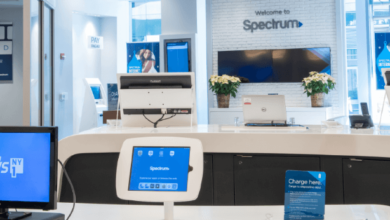The Role of Instagram in Digital Marketing: A Comprehensive Overview

In the ever-evolving landscape of digital marketing, Instagram has emerged as one of the most influential platforms for businesses worldwide. Its blend of visual storytelling, community engagement, and a highly active user base provides a fertile ground for marketers aiming to grow their brand visibility, engagement, and customer base. Since its launch in 2010, Instagram has revolutionized how businesses and consumers interact, offering new avenues for creativity, customer service, and direct commerce.
Today, Instagram’s role in digital marketing cannot be understated. Its versatile features such as Stories, IGTV, Reels, and Shopping allow businesses to connect with their audience in unique, engaging ways. Let’s explore the multifaceted ways Instagram contributes to digital marketing success and why it’s an essential tool for brands in the modern marketing landscape.
1. Instagram as a Visual Marketing Platform
One of Instagram’s greatest strengths is its emphasis on visual content. Images and videos tend to evoke a stronger emotional response than text-based content, making it easier for brands to forge a connection with their audience. In digital marketing, this visual appeal is crucial for brand recognition. Whether it’s through high-quality product photography, behind-the-scenes footage, or engaging Reels, Instagram enables brands to present themselves in a visually appealing and highly relatable manner.
The platform’s user interface, built around the idea of scrolling through a feed of images and videos, makes content consumption easy and quick. This is vital for marketing in a world where consumer attention spans are shorter than ever. Posts that feature striking imagery or short, snappy videos tend to capture attention faster, encouraging interaction and sharing. Through visual consistency and storytelling, brands can effectively differentiate themselves from their competitors.
2. Enhancing Brand Awareness and Visibility
Instagram has over 1 billion active monthly users, making it one of the most widely used social media platforms globally. For marketers, this translates into an unparalleled opportunity to reach a diverse and extensive audience. By consistently posting high-quality content, utilizing relevant hashtags, and engaging with followers, brands can significantly boost their visibility.
Hashtags, in particular, play a vital role in expanding a brand’s reach. By using trending and industry-specific hashtags, businesses can reach users who may not yet be following them. Instagram’s algorithm favors content that is actively engaged with, meaning the more likes, comments, and shares a post receives, the more likely it is to be shown to a broader audience.
Moreover, Instagram’s Explore page offers additional opportunities for visibility. If users engage with similar types of content, Instagram is likely to display related posts on their Explore page, increasing the likelihood of organic discovery. This feature helps businesses gain exposure to potential customers without directly paying for it, although advertising can be used to augment this reach.
3. Instagram Stories and Reels: Building Engagement
Instagram Stories and Reels have become powerful tools for marketers seeking to engage their audience more dynamically. Stories, which are temporary posts lasting 24 hours, provide a sense of urgency, prompting followers to interact quickly before the content disappears. This format encourages more direct and frequent interactions between brands and their followers.
With features like polls, question boxes, and countdowns, Instagram Stories can help businesses gather valuable feedback, create anticipation around product launches, and even drive website traffic via the “Swipe Up” feature available to accounts with over 10,000 followers.
Reels, Instagram’s answer to TikTok, allows users to create short-form, engaging video content. These 15- to 30-second clips are highly shareable and appear prominently in users’ feeds and Explore pages, increasing a brand’s chances of virality. Reels give brands an opportunity to showcase their personality, share tutorials, or offer bite-sized entertainment, all while tapping into the growing trend of short-form video content.
4. Driving Conversions Through Instagram Shopping
Instagram has evolved beyond being just a content-sharing platform; it is now a direct sales channel. Instagram Shopping enables businesses to tag products directly in posts and stories, allowing users to shop without leaving the app. This seamless integration between social engagement and e-commerce has drastically shortened the buyer’s journey, making it easier for consumers to move from discovery to purchase within a matter of clicks.
Through features like shoppable posts and the “Shop” tab, businesses can create an intuitive, aesthetically pleasing shopping experience that encourages impulse buys. For businesses, this means Instagram can drive conversions directly, eliminating friction in the purchasing process. Moreover, users can save and share products they are interested in, giving businesses more opportunities for brand visibility and engagement.
5. Influencer Marketing on Instagram
Instagram has become a hub for influencer marketing, where businesses collaborate with influencers to reach new audiences. Influencers, who have built trust and a loyal following within specific niches, can introduce brands to a larger audience in an authentic and engaging manner.
The appeal of influencer marketing lies in its authenticity. Followers are more likely to trust recommendations from influencers they follow and admire than they would from traditional advertisements. Collaborating with influencers enables businesses to leverage this trust, improving credibility and encouraging higher engagement and conversions.
Influencer marketing can take many forms on Instagram, from sponsored posts to influencer takeovers, where influencers manage a brand’s Instagram account for a day. These collaborations help businesses tap into new demographics and markets that they may not reach on their own.
6. Utilizing Instagram Ads for Targeted Marketing
Instagram’s advertising platform, integrated with Facebook Ads Manager, offers highly sophisticated targeting options for businesses. Instagram Ads come in several formats: photo ads, video ads, carousel ads, and Stories ads, each providing unique ways to showcase products and services.
Marketers can use Instagram’s ad platform to target specific demographics, interests, behaviors, and even locations, ensuring their content is seen by the most relevant audience. Additionally, Instagram’s lookalike audience feature allows businesses to target users who resemble their existing customer base, further enhancing the effectiveness of their advertising campaigns.
Through detailed analytics, businesses can track the performance of their ads in real time, enabling continuous optimization for better results. The ability to refine campaigns based on user engagement metrics such as clicks, likes, comments, and conversions ensures that marketing budgets are used efficiently.
7. Instagram Analytics: Measuring Success and Adjusting Strategy
Understanding how well your marketing strategy performs on Instagram is crucial to ensuring long-term success. Instagram Insights provides valuable data on how posts and stories perform, including metrics like reach, impressions, engagement, and follower demographics.
This data allows marketers to identify what type of content resonates best with their audience, adjust posting schedules, and refine their overall strategy. For example, if a particular post format receives high engagement, marketers can replicate this format in future content to maintain momentum. Instagram’s detailed analytics can also show which products drive the most engagement, helping businesses to streamline their marketing and sales efforts.
8. User-Generated Content: Leveraging Community Power
One of the most valuable aspects of Instagram marketing is the potential for user-generated content (UGC). UGC refers to any form of content, such as images, videos, and reviews, created by users rather than the brand itself. Encouraging followers to share their experiences with your product or service can lead to authentic promotion and organic growth.
Brands often run hashtag campaigns encouraging customers to share their own photos using specific branded hashtags. This not only creates a sense of community but also provides the business with free, high-quality content they can repurpose on their own feed. UGC acts as social proof, showing potential customers that real people are using and enjoying the product, making them more likely to trust the brand.
9. Instagram and Customer Relationship Management (CRM)
Instagram can serve as a powerful tool for customer relationship management. Through direct messages, comments, and interactive features in Stories, brands can maintain open communication with their audience, fostering stronger relationships. Whether it’s answering questions, addressing complaints, or simply thanking users for their support, these interactions humanize the brand and build trust.
Additionally, Instagram’s various features allow businesses to engage in conversations that extend beyond mere transactions. Polls, quizzes, and question stickers provide brands with valuable insights into their customers’ preferences, while also making customers feel heard and valued.
10. The Future of Instagram in Digital Marketing
As Instagram continues to evolve, its role in digital marketing will only become more significant. Features like augmented reality (AR) filters, further integration of artificial intelligence (AI) for personalized content, and even more sophisticated shopping capabilities suggest that the platform will continue to shape the digital marketing landscape in new and exciting ways.
The trend towards video content is likely to dominate, with Reels and Stories playing a central role in brands’ content strategies. Instagram may also continue to refine its advertising capabilities, offering more targeting options and enhanced analytics to ensure businesses can maximize their return on investment (ROI).
In conclusion, Instagram has firmly positioned itself as a cornerstone of digital marketing. Its visual-first approach, diverse content formats, and direct-to-consumer features make it an indispensable tool for businesses looking to build brand awareness, engage their audience, and drive conversions. Brands that can effectively harness Instagram’s unique capabilities will be well-positioned to thrive in the increasingly competitive digital marketing landscape.
FAQs
1. How can businesses increase their visibility on Instagram?
Businesses can boost visibility on Instagram by using relevant hashtags, engaging with their followers, posting consistently, and utilizing Instagram’s various features like Stories, Reels, and the Explore page.
2. Why is Instagram a good platform for influencer marketing?
Instagram is ideal for influencer marketing because it has a highly engaged user base and allows influencers to showcase products and services authentically, leading to higher trust and engagement from followers.
3. What is Instagram Shopping, and how does it benefit businesses?
Instagram Shopping allows businesses to tag products in posts, making it easy for users to purchase items directly from the app. This streamlined shopping experience can lead to higher conversions and impulse buys.
4. How can businesses measure the success of their Instagram marketing?
Success on Instagram can be measured using Instagram Insights, which provides data on reach, engagement.






